

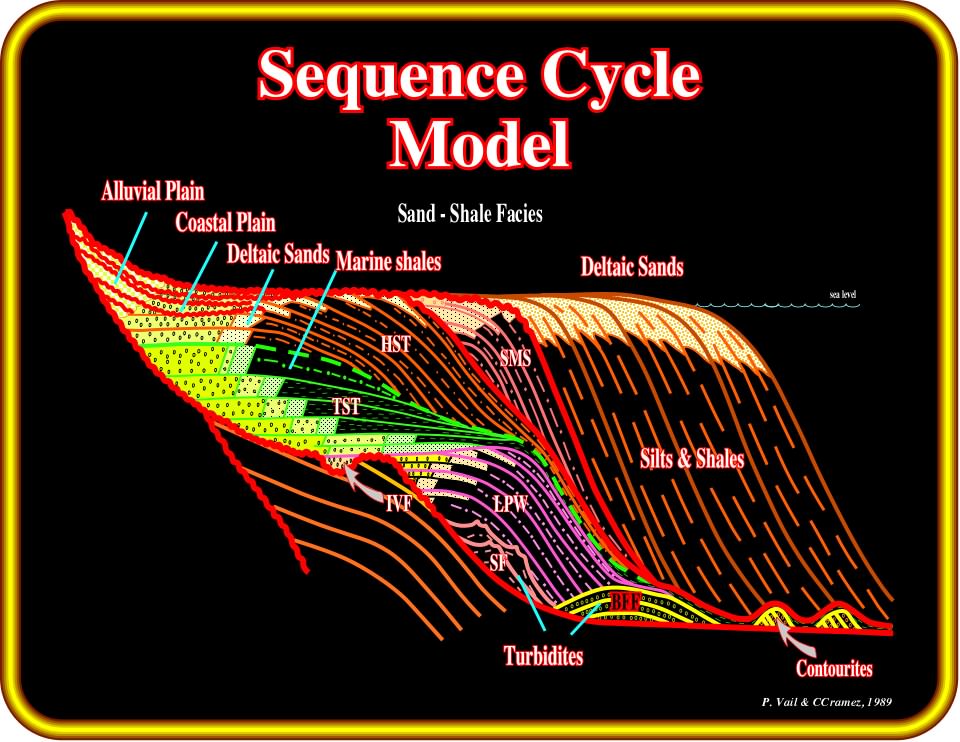
Plate 488- On this short course we have used the sequence cycle model proposed by P. Vail and his Exxon colleagues. The model illustrated here above is the Vail’s sand-shale model (slightly modified), in which the geological time between each chronostratigraphic line is 100 ky. A complete sequence-cycle is illustrated as well as the different systems tract composing it. In addition, within each systems tract the most likely depositional systems are predicted.
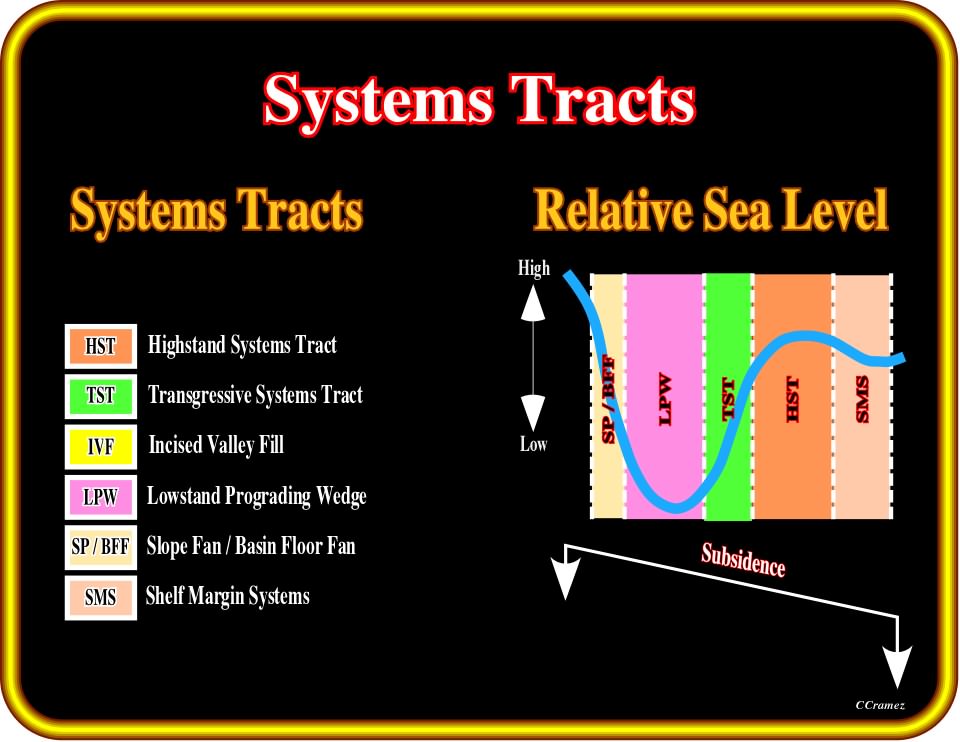
Plate 489 - In Vail‘s model, within a sequence cycle, there are three main systems tracts: Highstand systems tract (HST), Transgressive systems tract (TST) and Lowstand systems tract (LPW). The lowstand systems tract can be subdivided in three members: Lowstand Prograding Wedge (LPW), Slope Fan (SF) and Basin Floor Fan (BFF). In relation to the relative sea level curve, the unconformities are created during relative sea level falls, the period during which the slope and basin floor fans are deposited. The lowstand prograding wedge is deposited when the rate of sea level fall becomes decelerated and even when it starts to rise. The transgressive systems tract is deposited when the rise of the sea level is accelerated, while the highstand systems tract is mainly deposited during a decelerated relative sea level rise. The Shelf Margin Systems are deposited when the relative sea level starts to fall slowly (upper part of the relative sea level curve).
5.2) Sea Level Responses to Orbital Perturbations and Subsidence
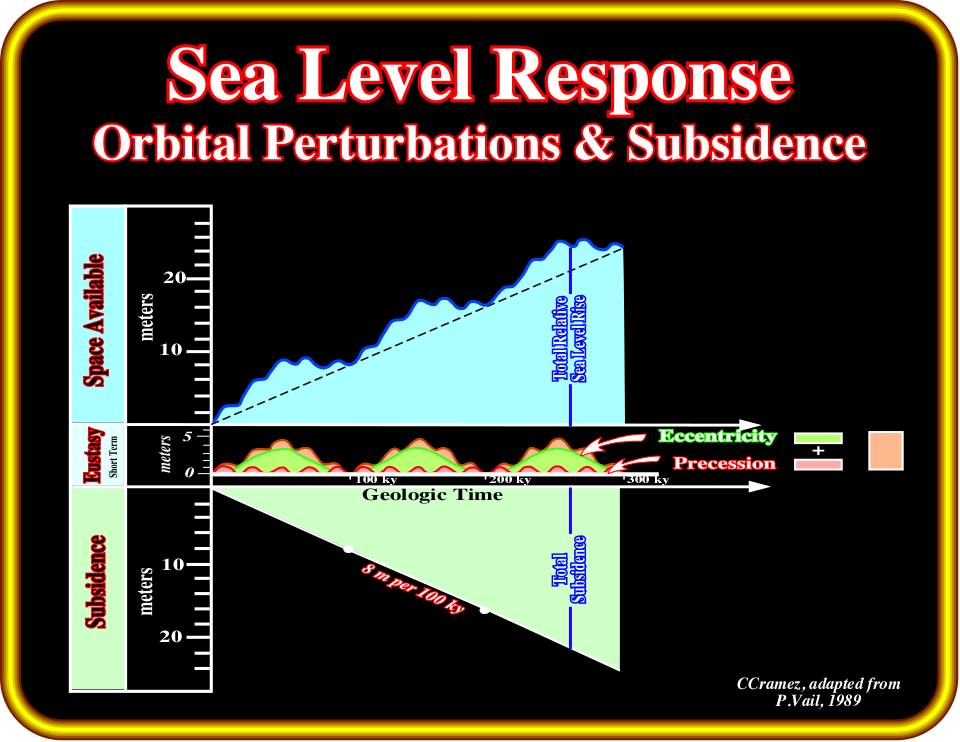
Plate 490- On these diagrams, where the space available, eustasy (Earth’s eccentricity and precession) and subsidence are taken into account, it is quite obvious that eustasy has a preponderant role on variations of the space available for the sediments. Such conjecture seems to be difficult to refute outside of the sedimentary basins developed in a compressional tectonic regimes, particularly in foredeep basins and folded belts.
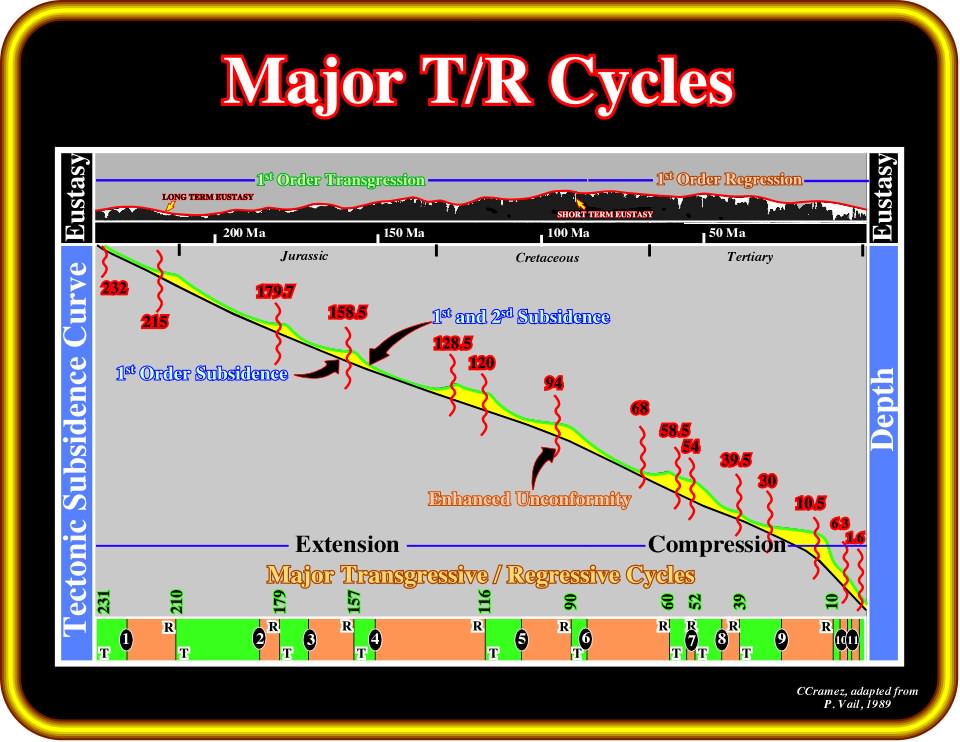
Plate 491- On this figure are summarized the major Meso - Cenozoic Transgressive/Regressive Cycles, as well as the unconformities between them. The short and long-term eustatic curves are depicted on the top, as well as the 1st order transgression and regression curve.
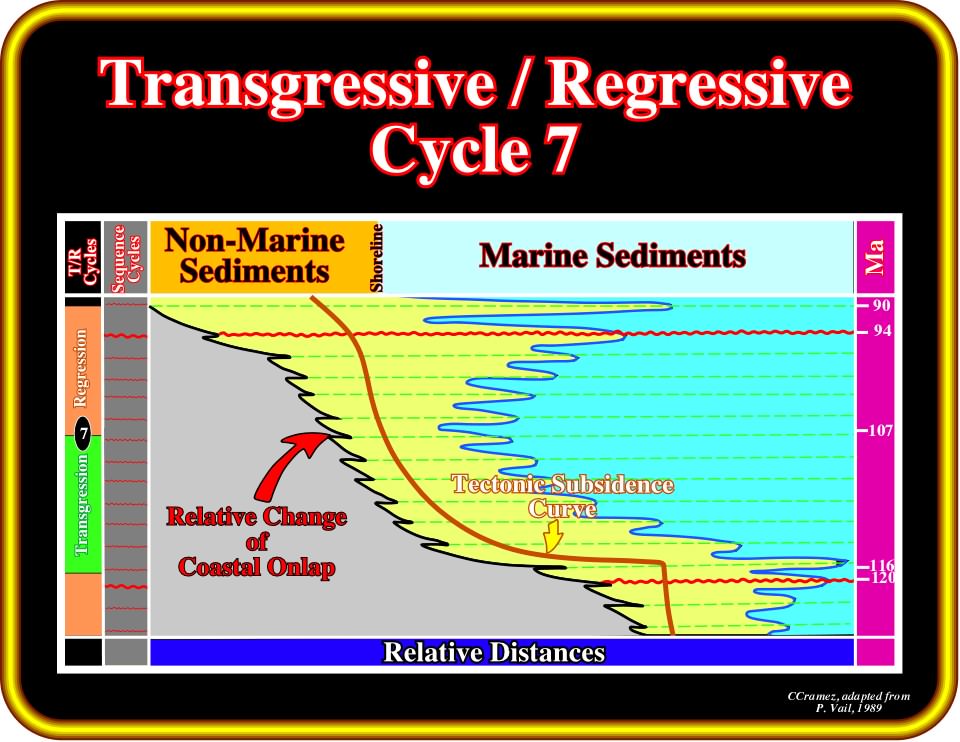
Plate 492- On this figure is represented the Meso-Cenozoic transgressive/regressive cycle nº 7 (see Plate 491), the sequence cycles (according to the Haq‘s curve), the tectonic subsidence, the relative coastal onlap, as well as the displacements of the depositional coastal break (roughly the shoreline).
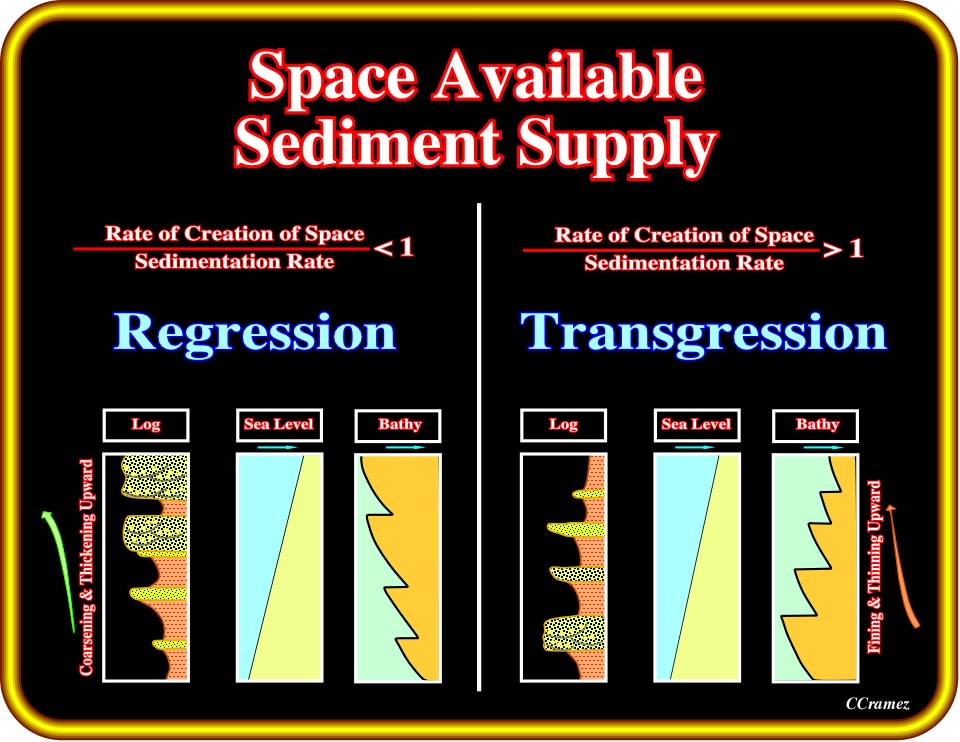
Plate 493 - As illustrated, when the ratio between the rate of creation of space and the rate of sedimentation rate is less than 1 the deposited sediments are coarsening and thickening upward. on the contrary, when the ratio is higher than 1, the deposited sediments are fining and thinning upward. In the first case a regression takes place, while, in the second one, a transgression occurs.
5.5) Paleobathymetry, Faunal Peaks, Depositional Systems, etc.
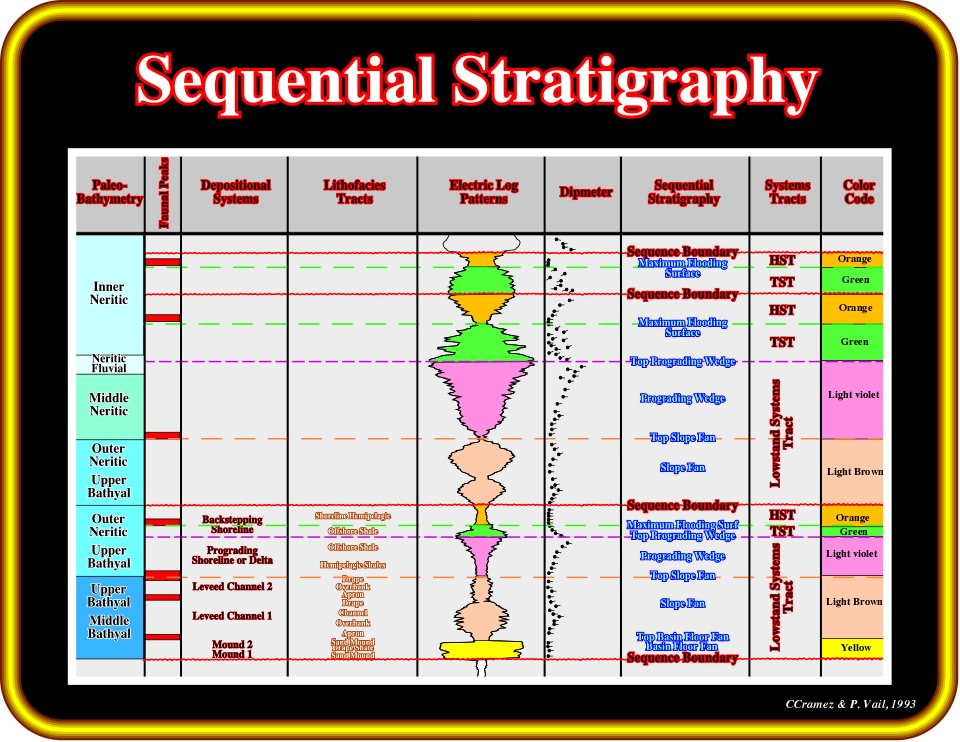
Plate 494- On this plate is depicted the sequential stratigraphy of a hypothetical well. Notice that the proposed color code is largely adopted by the majority of explorationists using sequential stratigraphic analyses.